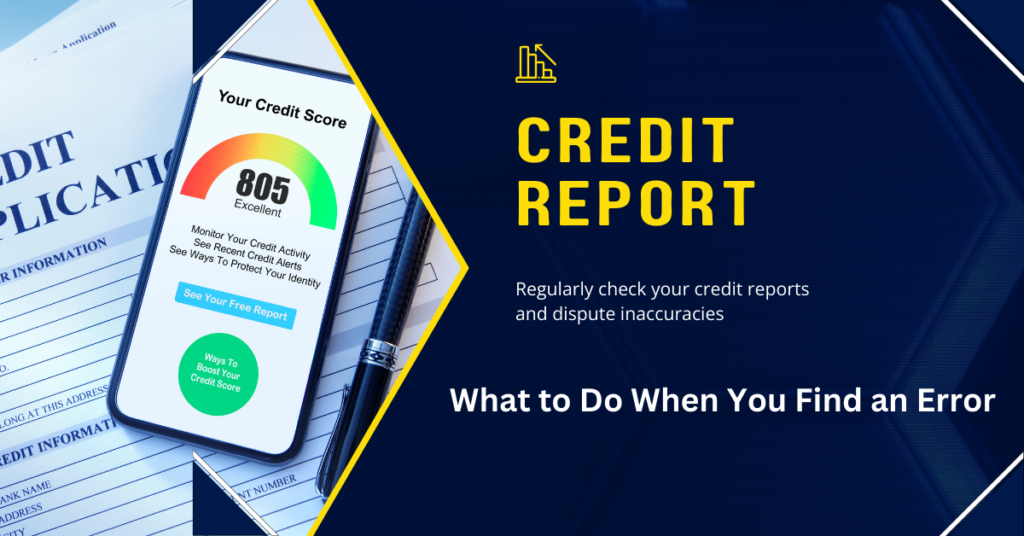Did you know that a startling 34% of consumers found at least one error in their credit reports according to a recent Consumer Reports investigation? Credit report errors might seem innocuous, especially when they involve typos in your address. However, a closer look reveals that 11% of consumers stumbled upon inaccuracies in their account information, and the most alarming were accounts they didn’t recognize. In this blog post, we’ll delve into the world of credit reports, exploring how to identify errors and what steps you should take if you find one. The keyword “credit report” is not just a phrase here; it’s a crucial element in safeguarding your financial well-being.

Read Your Credit Reports (All of Them):
The first step in rectifying credit report errors is awareness. You’re not dealing with one report; you have three. Equifax, Experian, and TransUnion maintain separate credit reporting files. Despite the information-theoretically being identical, discrepancies are not uncommon. Your mission? Download and scrutinize all three reports. Now, you might be wondering where to get them without breaking the bank.
Under federal law, you’re entitled to free credit reports, and AnnualCreditReport.com is the official go-to destination. Despite its name, you can snag free copies not just annually but as often as once a week. Yes, you read that right. Before you get skeptical, remember that vigilance over your credit is a weekly task, not an annual one. Stay ahead and maintain control.
What to Do When You Find an Error:
The moment you spot an error, don’t panic. You have the right to dispute it, and the process is more straightforward than you might think. Remember, you need to dispute with each credit bureau independently if the error appears on multiple reports.
- Craft a Dispute Letter:
- Include your name, address, and a detailed description of the inaccurate information.
- Back up your claim with supporting documents. For instance, if an account is reported as unpaid, provide evidence of payment.
- Attach a copy of your credit report, highlighting the erroneous information.
- Send the letter via certified mail with a return receipt.
- Online Dispute Process:
- All three credit bureaus offer an online dispute process. Check the FTC website for essential links and addresses.
- It’s essentially a digital version of the letter, making the process smoother for those who prefer the online route.
- Investigation Period:
- The credit bureau has 30 days to investigate your dispute.
- During this time, the bureau contacts the creditor, sending your dispute and documentation.
- If the creditor confirms the error, the bureau notifies all three agencies for removal.
- If the creditor doesn’t respond within the 30-day timeframe, the disputed information is removed.
Only Dispute Inaccurate Information:
It’s crucial to use the dispute process only for inaccuracies, not as a tactic to remove accurate negative information. Some credit repair services exploit this process, promising quick fixes but leaving you in a more precarious situation when the truth emerges. In the realm of credit repair services, exercise caution—buyer beware.
Conclusion:
Your credit report is more than just a collection of numbers; it’s a reflection of your financial health. With errors lurking, it’s imperative to be proactive. Regularly checking your credit reports and disputing inaccuracies are steps towards financial empowerment. Remember, the key lies in accuracy, not manipulation. As you embark on this journey of credit report scrutiny, empower yourself with knowledge and guard your financial fortress. Your credit report is your financial story; make sure it’s a tale well-told.
